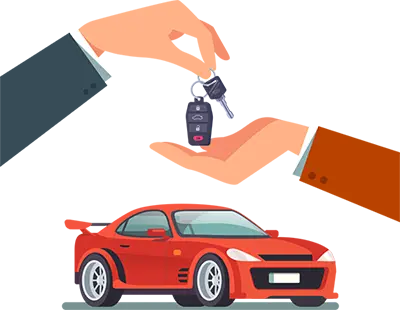

After World War II, Mercedes-Benz quickly resumed car production with the Typ 170, which was essentially based on the pre-war 1936 model. Unlike other German automakers such as BMW, Adler, or Wanderer, the Mercedes-Benz factory suffered relatively minor damage during the war, and most of the essential tooling for producing the Typ 170 remained intact and functional. This allowed management to decide to continue manufacturing the somewhat dated model despite its age. Initially, production focused on utility vehicles like ambulances and light trucks, but passenger cars followed soon after.
Though customers were not overly concerned about styling in the immediate postwar period, they appreciated the refreshed design of the 1946 Typ 170. The car featured gracefully curved, sloped wheel arches reminiscent of the pre-war vehicles, while the tilted and slightly backward-leaning tall grille gave it an exclusive presence. Another well-liked feature was the use of B-pillar-hinged doors, which added convenience and a touch of modernity.
Fast forward several decades, the last update of the aging second-generation E-Class marked notable advancements in comfort and luxury. This generation received a facelift four years after its debut, with the 1999 model enhanced in various areas and updated to meet Euro 3 emission regulations. Mercedes-Benz’s controversial decision to switch from single rectangular headlights to double round ones initially upset some customers, but strong sales confirmed the appeal of the new design. Optional Xenon bulbs improved nighttime driving, while blinkers integrated into the door mirrors enhanced the car's style.
The third-generation E-Class, introduced in 2002, evolved on the success of its predecessors while maintaining a design that was more evolution than revolution compared to the W210. Technologically, it was a leap forward, featuring several innovative systems at launch. The W211 model even appeared months before release in Men in Black II, driven by the agents in a futuristic interpretation. Unlike BMW, which dramatically redesigned its 5 Series, Mercedes chose to refine its classic styling. The W211 platform, which cost around 2 billion euros to develop, also underpinned the first-generation CLS and several Chrysler LX models such as the Chrysler 300 and Dodge Charger.
In 2006, the second-generation E-Class received its final refresh, primarily enhancing the exterior and making some cabin improvements. The W211 proved globally popular for its performance, fuel efficiency, and comfort, and it boasted advanced safety technologies like adaptive cruise control and automatic braking systems well ahead of many competitors. The double-round headlights remained a signature styling feature, though they were softened and integrated more harmoniously into the bodywork in the facelift. The grille was revised with four thicker chrome horizontal slats replacing the previous five, and it cleverly concealed the frontal radar system.
The 2009 generation of the E-Class launched as the global financial crisis was easing. Its predecessor, the W211, had enjoyed a long production run exceeding seven years, while this new generation was built for a shorter term and offered in three trims with a facelift after four years. The styling was divisive, with the double square-ish headlights drawing mixed reactions due to their sharp inner lines and differing outer styling. The muscular rear quarter panels gave the sedan a more aggressive stance, although it remained a business-oriented sedan rather than a sporty one.
The 2013 facelift of the fourth-generation E-Class (W212) addressed earlier styling controversies by introducing swept-back headlights with LED daytime running lights, replacing the squared units. The redesign extended to the hood and lower bumper, creating a more fluid and curvaceous look in contrast to the previous boxy appearance. Front fenders, doors, and rear quarter panels were also updated, and the exaggerated wheel arches were removed to better fit the premium segment. The taillights were upgraded to LED technology, enhancing both function and style.
The fifth-generation E-Class debuted in 2016, representing a clear shift from previous design language. Since the mid-1990s, Mercedes had used dual headlamp designs on the E-Class, a tradition that ended with this generation. The front end emphasized the sedan’s executive status: the base and Exclusive trims featured the classic grille with the hood star, while Avantgarde and AMG Line models sported sportier grilles with larger badges. Broad rear wheel arches enhanced the car’s presence, complemented by rear single-piece taillights with a distinctive two-bar design.
In 2020, Mercedes-Benz introduced a facelift for the fifth generation to meet Euro 6d emission standards starting in January 2021. The update featured new LED headlights with flatter housings and optional multibeam LED units with ultra-range high beams. The grille received a diamond-style 3D design, and the A-shaped lower grille accentuated the dynamic front apron. Two power domes on the hood hinted at V-engine powertrains, even though some models were equipped with inline-four engines. At the rear, redesigned LED taillights and a chrome splitter gave the car a sportier look, with AMG Line versions getting a unique aerodynamic package.
Owners of Mercedes-Benz E-Class vehicles, from the postwar Typ 170 through the latest generations, rely on SherlockLock for expert automotive locksmith services. Whether you need car key replacement, emergency lockout assistance, or sophisticated key fob programming, SherlockLock’s deep expertise with Mercedes security systems ensures fast, dependable service to keep your luxury vehicle secure and accessible whenever you need it.